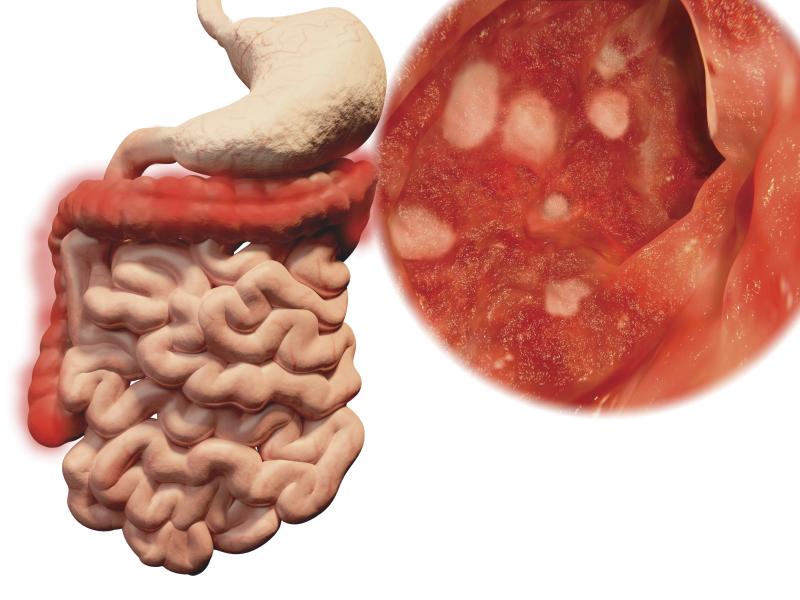
Ulcerative colitis (UC) patients with a primary nonresponse to an antitumour necrosis factor (anti-TNF) are more likely to achieve clinical remission with vedolizumab (VDZ) than with infliximab (IFX), as shown in a recent study.
“Subcutaneous anti‐TNF agents currently available are adalimumab and golimumab. They are widely used as first‐line biologic treatment in patients with refractory UC as they are preferred to intravenous drugs by both patients and physicians. However, despite drug optimization, approximately 73–79 percent of UC patients fail these drugs within the first year,” the investigators said. [Inflamm Bowel Dis 2012;18:1523‐1530; Gastroenterology 2012;142:257‐265; Gastroenterology 2014;146:96‐109]
“Before tofacitinib was launched, the common management of patients who experienced failure to adalimumab or golimumab was to start an intravenous agent, which could be IFX or VDZ… Due to the absence of a randomized controlled trial studying the efficacy of IFX after failure of a subcutaneous anti‐TNF, no network meta‐analysis can be performed to compare it to VDZ in that situation. Hence, efficacy and safety evidence is very scarce to choose a second‐line intravenous biologic agent in UC,” they added.
To address the gap, the investigators conducted a retrospective analysis of 225 consecutive UC patients (mean age, 42.7 years; 59 percent male) who failed first-line treatment with adalimumab or golimumab to compare the efficacy of IFX (n=154) with VDZ (n=71).
At week 14, clinical remission occurred with significantly greater frequency on VDZ than on IFX (49 percent vs 26 percent; p=0.001). A propensity score-matching analysis, which established comparable groups of patients, confirmed that VDZ had better efficacy (odds ratio, 1.67, 95 percent confidence interval, 1.08–2.56; p=0.02). [Aliment Pharmacol Ther 2020;doi:10.1111/apt.15680]
Results for survival were likewise more favourable with VDZ. Over a median follow‐up of 117 weeks, survival rates without treatment discontinuation at years 1 and 3 were 80 percent and 55 percent, respectively, vs 50 percent and 29 percent with IFX (p<0.001). The corresponding rates of survival without UC‐related event were 74 percent and 52 percent with VDZ vs 49 percent and 27 percent with IFX (p<0.01).
Overall, 26 patients (12 percent) had adverse events that could be related to the intravenous biologic: 22 (15 percent) in the IFX group (allergic reactions, infections, immune disorders or atypical chest pain) and four (6 percent) in the VDZ group (infections, cutaneous xerosis or neurological symptom; p=0.1). There were five severe side effects, all occurring in the IFX group, as follows: pneumonia, Clostridium difficile colitis, neutropenic sepsis, sarcoidosis and hypersensitivity pneumonitis.
“The present retrospective multicentre study is one of the first comparing directly IFX to VDZ in patients who failed a first subcutaneous anti‐TNF agent, showing a nearly twofold higher clinical remission rate at week 14 with VDZ, as well as longer drug persistence than IFX,” the investigators said, adding that their survey had been initiated independently and no pharmaceutical company had any hand in study design, data collection, analysis, interpretation or writing.
“These comparative data, highly expected by patients and physicians, have to be confirmed by ongoing head‐to‐head trials,” they added.